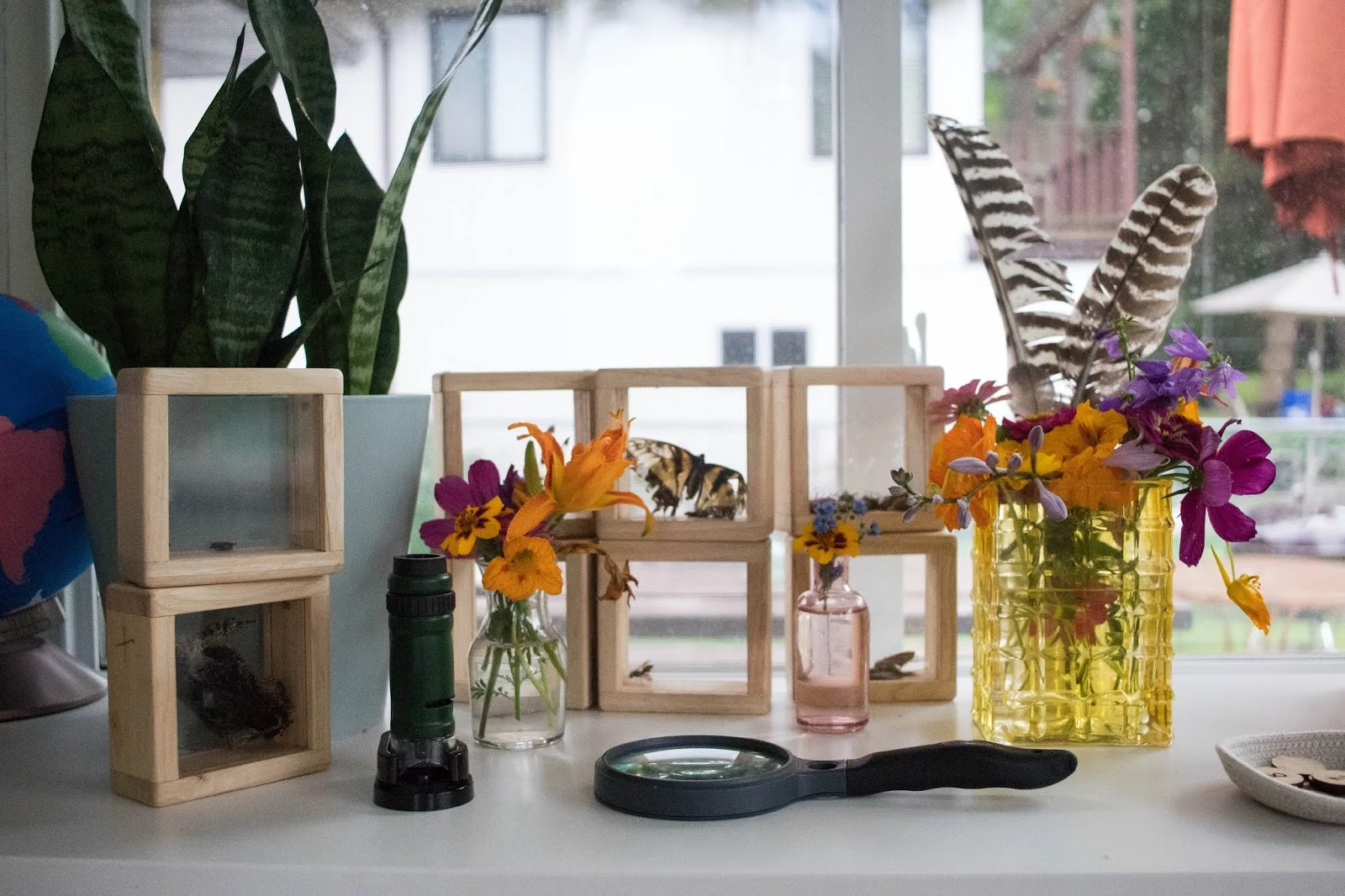I get asked a lot about what kind of science work I do with my kids. Or, what kind of work parents should make for their kids. And if I have any ideas for science shelves.
This post contains affiliate links at no cost to you.
One of the easiest answers to those types of questions is to look to nature. The natural world provides so many amazing opportunities for small children to learn that we don’t even have to create anything elaborate.we just have to observe and give our children time with nature. And often, a collection or two will spring up out of this time together.
How do you support a child's nature collection at home?
- Provide containers, baskets, trays, or other places to safely store a collection
- Lots of outside opportunities
- Leave your judgement at the door
- Clear some space - dedicate a nature table
- Bring a bag with you when you’re outside
- Look closely with your child - share their excitement
- Keep it local - doesn’t have to be a vacation thing
- Teach your child responsible collection techniques - we don't take living objects for example
Children are attracted to the beauty of the natural world and seem to find it everywhere so it’s no surprise that nature collections seem to be a natural part of childhood. Supporting that collection can provide give children so many possibilities for work that you don’t have to add much else to your shelves.
At our house, an interest in dead beetles last summer has changed into an interest in all dead bugs. Nora looks for them everywhere. Our collection has grown to include several moths, butterflies, dragonflies, a wasp, and several beetles. Recently, her interests have expanded to a toad skin she found while biking. Somewhere a long the way feathers have been added to the things she eagerly collects and shoves into her pockets.
What Can You Do with a Nature Collection?
- read about related topics
- compare textures
- measure and weigh
- examine under a microscope or magnifying glass
- tracings, rubbings, and other art projects
- just talk and connect over the items - share in your child's joy
- share information about the items with siblings, friends, or classmates
- organize or preserve items - I love these ideas for preserving bugs
- search for more!
- visit a local museum where you can learn more about the objects collected
- decorate the area together - Nora's favorite in summer is adding fresh flowers
We keep them in these wonderful boxes. I love them because they help to keep the specimens safe while also keeping them out of other little mouths. The only downside of these boxes is that it is harder to look at the insects under a microscope once they are in the box and they are a bit of a splurge. But, they can be removed and replaced, and provide nice practical life work in opening and closing.
I hope Nora's desire to expand her nature collection doesn't stop anytime soon. The joy she gets when adding to her collection is absolutely contagious. And, I love these glimpses into her world and the things she finds interesting!
Does your child have a nature collection? How do you cultivate and protect that interest? How do you use the collection?
12 Months of Montessori
This post is part of the 12 Months of Montessori series. This month’s theme is Science and Nature. Don’t miss these Montessori and Montessori inspired science and nature posts.
Ocean Science for Kids - Easy Ocean Life Experiment | Natural Beach Living
Human Anatomy Body Systems Printable 3-Part Cards | The Natural Homeschool
The Ultimate Montessori-Inspired Star and Constellation Unit | Living Montessori Now
Summer Nature Collections | The Kavanaugh Report
Human Body Montessori-Friendly Learning Materials | The Pinay Homeschooler
How To Turn Fruits Into Magic Color Changing Paint | Uno Zwei Tutu








